Football
Film Look: Takeaways from OSU’s Road Victory Over WVU
We saw some new wrinkles against WVU.
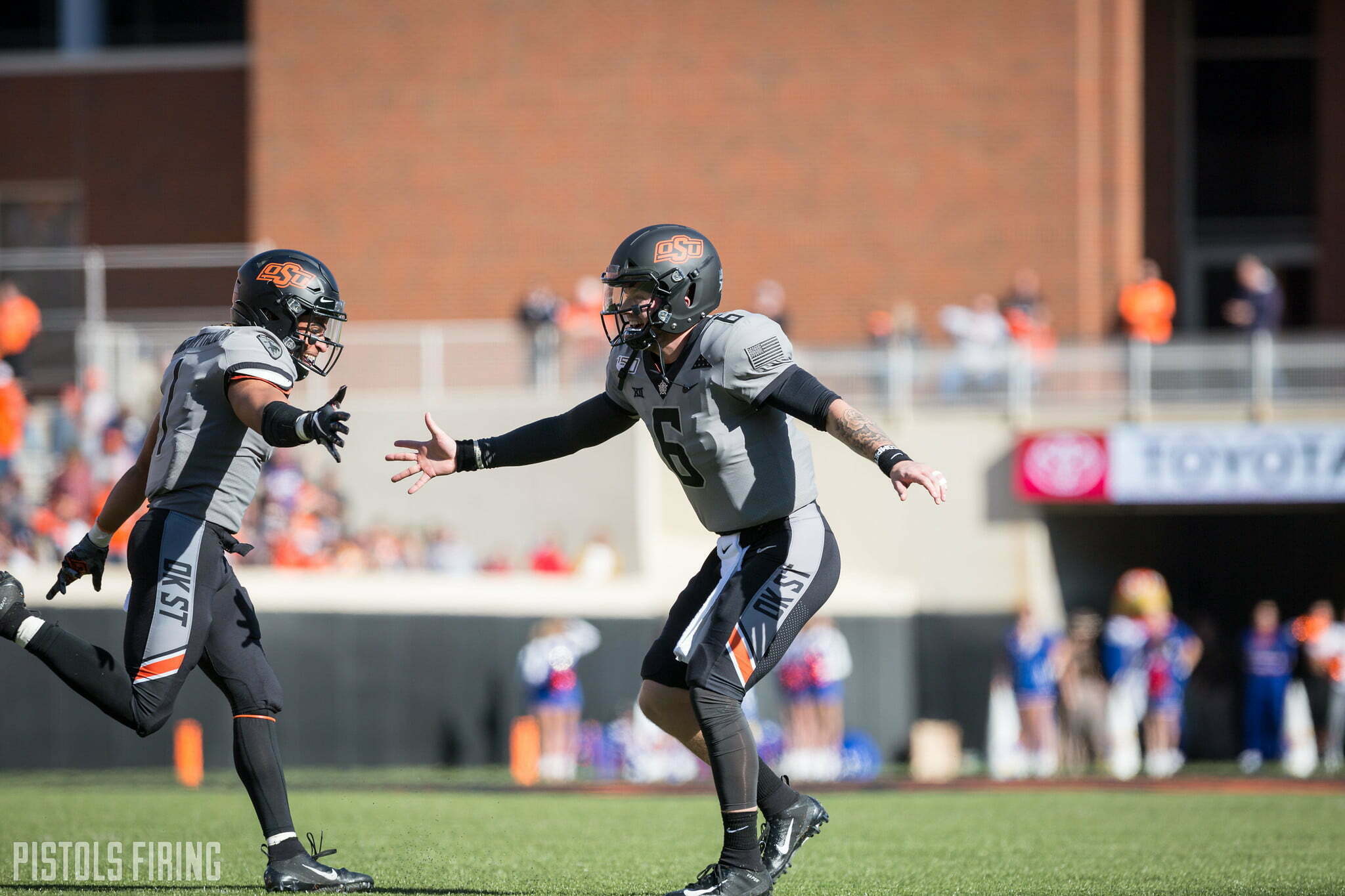
Oklahoma State continued its winning streak in Morgantown this past Saturday beating West Virginia 20-13. There’s a lot to cover from this win, so let’s get straight to my takeaways.
Running Game
OSU offensive coordinator Sean Gleeson continued to mix things up in the Cowboy running game against the Mountaineers. We saw some familiar concepts and some new wrinkles in this one, as running back Chuba Hubbard notched his ninth consecutive 100-yard performance on the ground. Below I’ll cover some of the things that stood out to be in the Oklahoma State rushing attack.
Split-Back Bash
I was discussing this play with the Tape Doesn’t Lie Podcast guys over the weekend as they noticed this upon their rewatch. In the past few weeks, I’ve written about Zone Bash and Counter Bash, and now Gleeson has added Bash out of a split-back look. To recap, in Bash, or “back away,” the quarterback and the running back (or wide receiver in jet sweep motion) switch responsibilities. The QB will follow the primary run blocking, and the RB/WR will run away from the blocking around the outside.
What differs from the play I previously wrote about after the Iowa State game, is that the Cowboys are in a split-back formation with both Hubbard and LD Brown in the backfield. See below for a diagram of what the concept looks like.

Here’s the Zone Bash against Iowa State.
Unlike the play above, the running back now has a lead blocker for the alley defender, along with the receivers to that side.
We’ve seen the Cowboys run a similar concept with the Cowboy Back as lead blocker, but running this out of a two-back formation is something I don’t believe Gleeson has utilized this season.
H-Counter (RPO)
I haven’t really seen Gleeson run much H-Counter since earlier this year. However, he went to this concept several times against the Mountaineers. In H-Counter, the tight end (or Cowboy Back) lined up in the H-Back spot, pulls around the end along with the backside guard. The pulling linemen create additional gaps that the defense isn’t always prepared for. See an example in the image below.

Here’s an example of Gleeson’s Princeton offense running this play.
And, here’s the Pokes running it against WVU this past Saturday with Cowboy Back Logan Carter leading the way through the hole.
Gleeson also tagged on a run-pass option (RPO) concept to the H-Counter. In the following video, you’ll see three receivers to the bottom of the screen lined up across from three WVU defenders. Upon the snap of the ball, the defender over the slot moves towards the line of scrimmage following the flow of the play. Brown recognizes that now OSU has the numbers advantage of three versus two on the outside, pulls the ball back from Hubbard and fires out to wide receiver Dillon Stoner for a nice gain.
Receiver Motion to Extra Blocker
The next concept was something I don’t think I’ve seen this year from the Cowboys, at least not with the personnel that ran it against the Mountaineers. In the play below, you see wide receiver LC Greenwood motion across the formation and then sets up in an H-back position on the right side of the line of scrimmage. After the snap, Brown hands to Hubbard and Greenwood performs a kick out block on the WVU linebacker.
The Pokes did something similar later in the game on third-and-1.
This play does two things. It adds an additional blocker in the running game while the pre-snap motion can cause some confusion on the defensive side of the ball.
Red Zone Creativity
We really started to see Gleeson’s creativity in the red zone. For instance, the play I just mentioned above where Greenwood is motioned near the line of scrimmage was in the red zone. This creativity paid off as the Pokes went 4-for-4 in the red zone with two field goals and two touchdowns.
Some other interesting things we saw on Saturday were this two Cowboy Back pre-snap motion.
This touchdown pass to Cowboy Back Jelani Woods, another play with three Cowboy Backs in at once.
Lastly, this touchdown in the fourth quarter. Pre-snap you see Cowboy receiver Landon Wolf move across the field in a jet sweep motion. Brown calls for the snap just as Wolf is passing which makes the defense think there’s a possibility that Wolf gets the ball. Wolf’s defender follows him across the formation, leaving Stoner one-on-one on the outside. Brown sees this, fakes to Hubbard, pulls the ball back and hits Stoner on the slant for six.
This play has a lot going on with the jet motion and the fake to Hubbard. Woods is on the field, and he had caught a touchdown earlier in the game (shown above), so you know he was getting some attention from the WVU defenders.
Along with the running game and the red zone creativity, we also saw Chuba Hubbard utilized heavily in the passing game. Gleeson dialed up the running back screen passes multiple times in this game, which wasn’t a huge surprise with the amount of pressure WVU defensive coordinator Vic Koenning likes to employ in his gameplan. We also saw Brown hit on a lot of quick hitches, slants and out routes, showing his accuracy on those throws.
Even though they may not be running 80-plus plays a game like some OSU offenses in recent years, this unit is really fun to watch, and I’m excited to see what Gleeson schemes up for Bedlam.

-
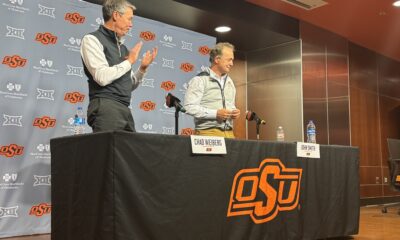
 Wrestling5 days ago
Wrestling5 days agoThe Top 5 Quotes from John Smith’s Retirement News Conference
-
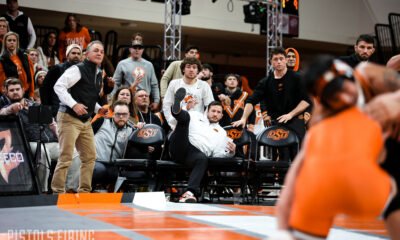
 Wrestling3 days ago
Wrestling3 days agoOSU Wrestling: How John Smith Started a Tradition of Late-Night Workouts For Cowboys Seeking World Glory
-
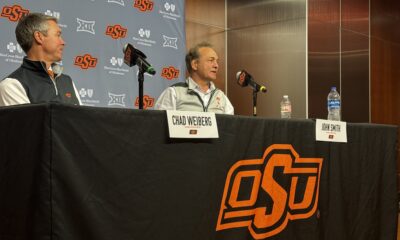
 Wrestling4 days ago
Wrestling4 days agoOSU Wrestling: The Impact John Smith Had on His Final Boss, Chad Weiberg
-
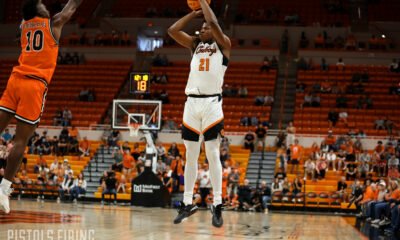
 Hoops5 days ago
Hoops5 days agoJustin McBride Enters Transfer Portal






